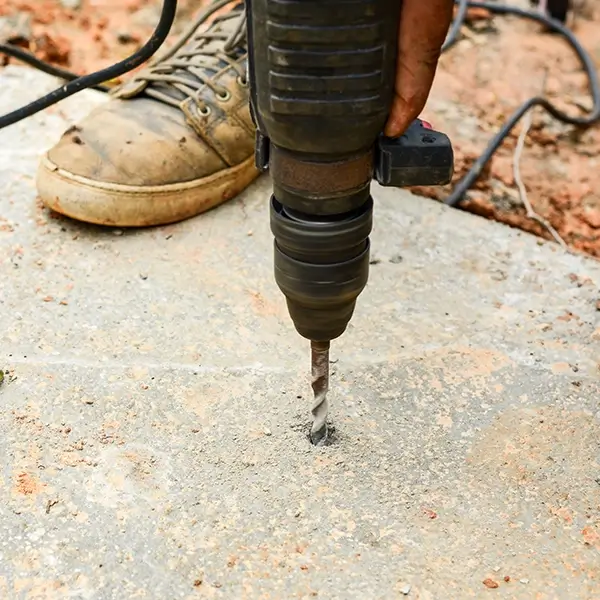Radon mitigation systems work by using a fan and piping to pull radon gas from the soil beneath a building and expelling it outside above the properties roofline. This process, known as depressurization or soil suction, creates a negative pressure zone that keeps radon from entering your indoor air, ensuring a safe and healthy environment.
However, the amount of suction required for optimal mitigation can vary depending on a number of factors such as design and size. Large commercial facilities with complicated ventilation systems will likely require a far more expansive and powerful mitigation system than a single-story home. To help determine the proper level of suction and measure the effectiveness of a mitigation system, we perform what is known as PFE testing.
What Is PFE Testing?
PFE testing, or Pressure Field Extension testing, measures the suction a radon mitigation system generates under a property. This testing is essential for assessing how well the system manages radon levels. By evaluating the pressure difference created by the system in the soil beneath the foundation, PFE testing ensures the system effectively draws radon from the soil and vents it outside.
The process starts with drilling a small hole in the concrete floor at the optimal location for the suction pit and piping. This establishes the starting point for the negative pressure zone. Smaller holes are then drilled at various points across the basement to measure pressure in specific locations. A vacuum is applied to the main hole to draw air from the soil, and the pressure is measured to determine the extent of the suction field.
The Benefits of PFE Testing
PFE testing is extremely beneficial to the design, installation, and ongoing maintenance of radon mitigation systems:
Professional Radon Testing & Mitigation Services
Whether you’re installing a new mitigation system or verifying the effectiveness of an existing one, PFE testing ensures optimal performance. At Southwest Radon Eliminators, we offer a variety of commercial and residential radon mitigation and testing services, including PFE testing. Contact us today to learn how our PFE testing services can benefit you!
